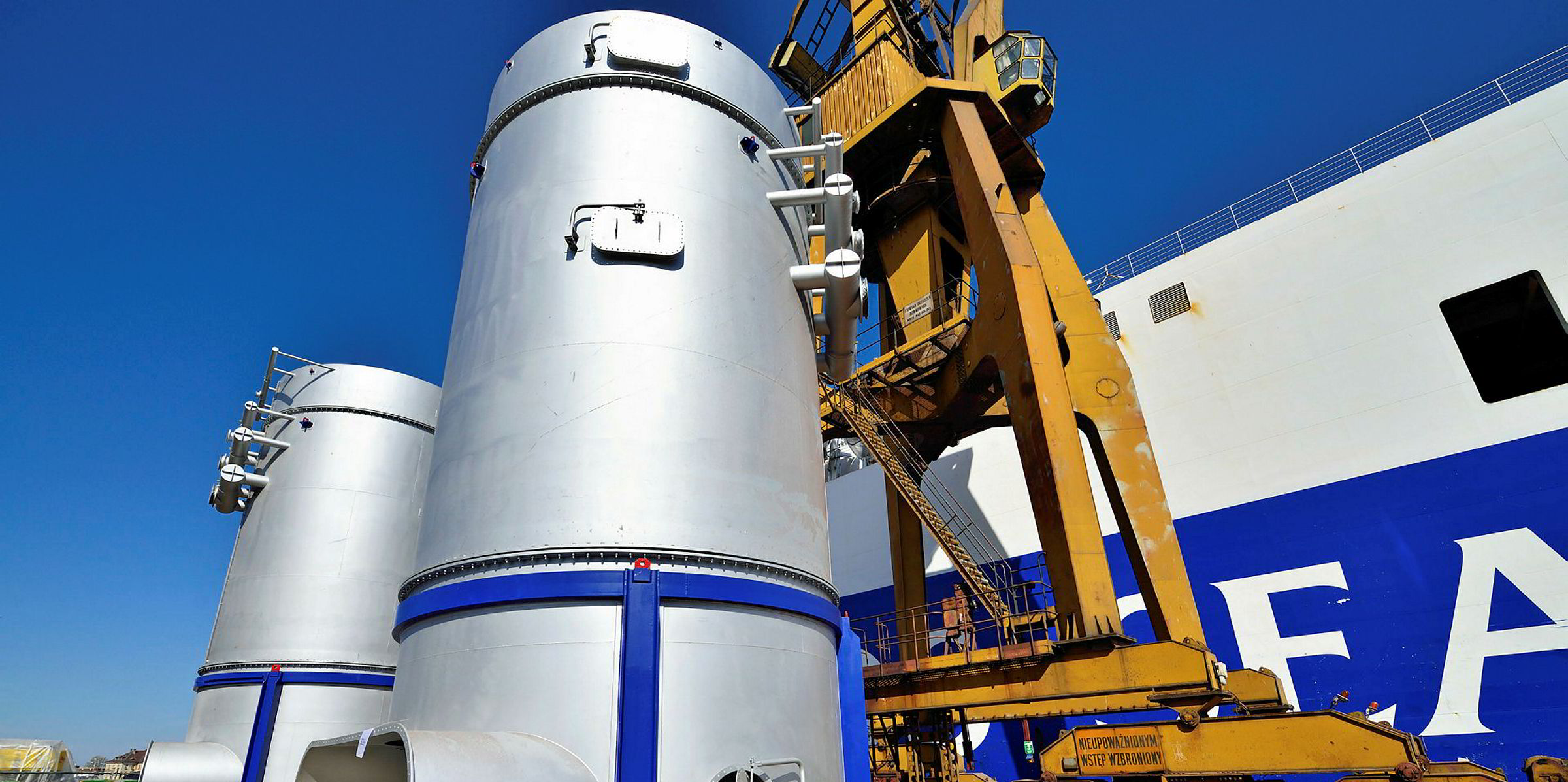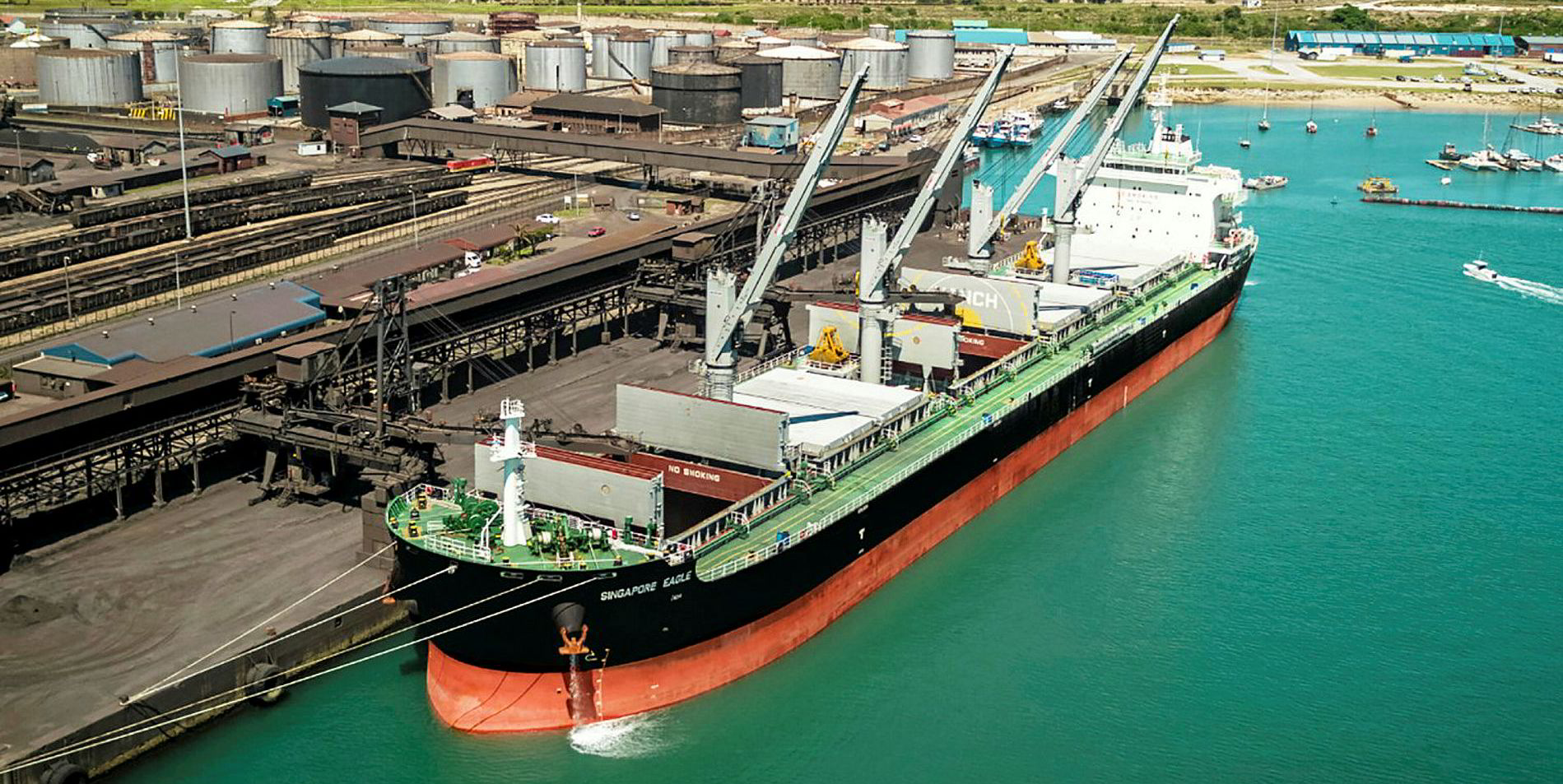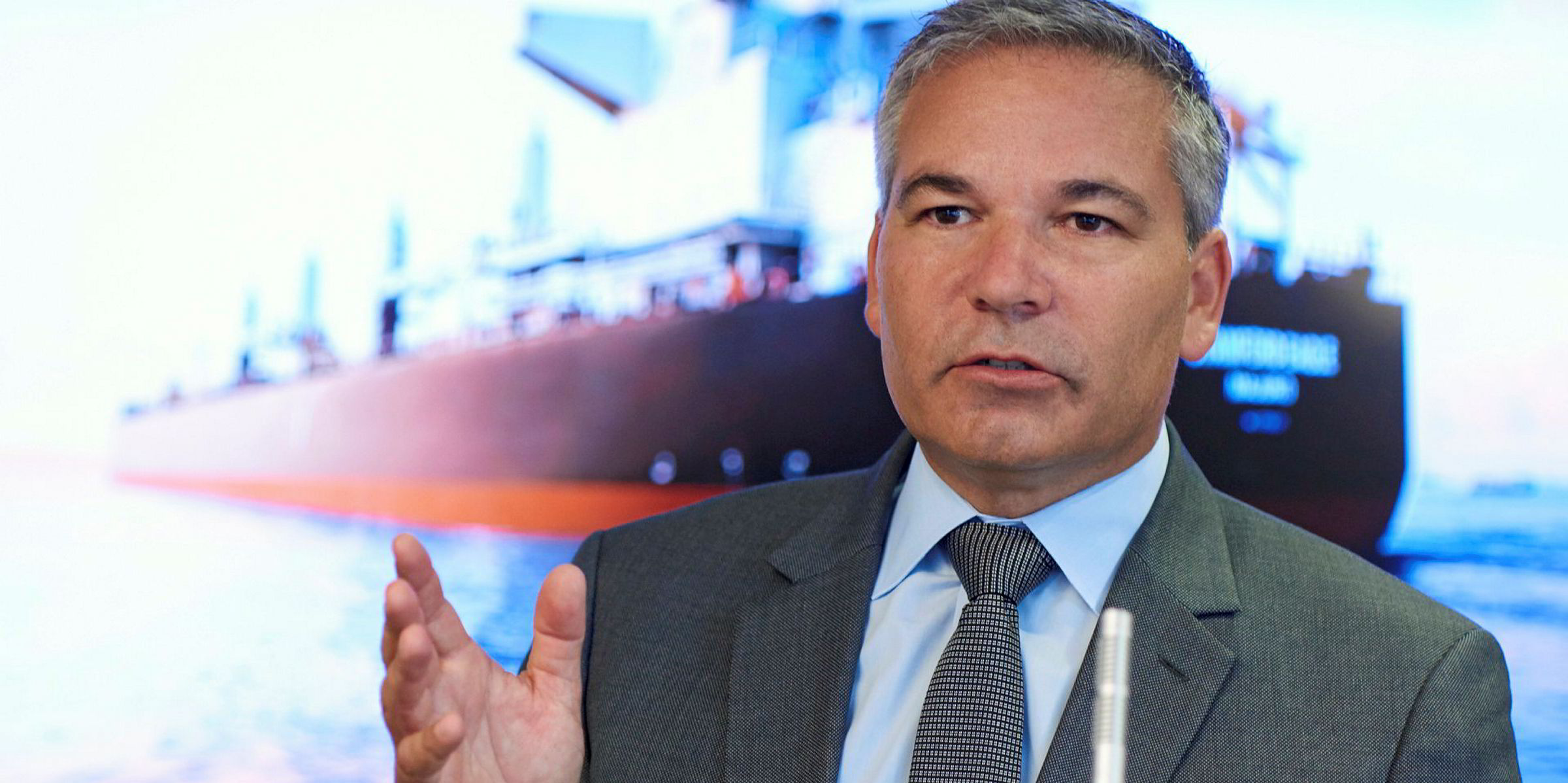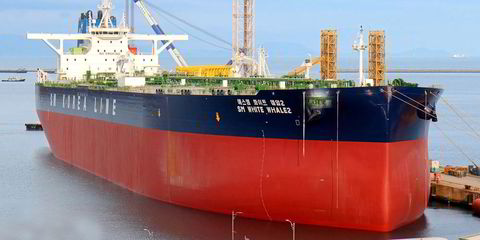Since taking over as Eagle Bulk’s chief executive in September 2015, Gary Vogel has placed his stamp on the New York-listed dry bulk owner.
He moved its headquarters from New York to Connecticut. He reshaped Eagle’s operating profile from a tonnage provider to an active owner-operator, bringing all management in-house. Vogel even commissioned a revamp of the company’s logo.
So when it comes to exhaust scrubbers, it’s no surprise that Vogel and his management team are again doing things their way, while betting that outsized returns await.
Merely by opting for scrubbers on 37 of its 46 bulkers, Eagle is in a minority of owners — albeit a growing one — choosing the devices to meet the IMO’s 2020 emissions regime.
But what may be more interesting is that Eagle owns supramax and ultramax bulkers — smaller ships that by conventional wisdom are less likely to see quick returns on their investment than larger capesizes.
Furthermore, it has arranged to have some of the installation work done while the ships are laden on voyages with the help of “riding crews”, thus reducing off-hire time.
TW+ caught up with Vogel at Noble Capital’s annual investor conference in Fort Lauderdale, Florida, and learnt why the company is again walking its own path on an important strategic issue.
“Well, we’re not putting scrubbers on our capes, because we don’t have any capes,” Vogel quips, before explaining what triggered Eagle to move.

“We ran our own analysis. We felt the economics would be compelling in a wide range of fuel-spread environments. We just needed to get comfortable with a number of variables, including the availability of heavy fuel.
“We felt we could tailor and adjust our trading patterns around major bunkering ports where heavy fuel is available. And now I’m more confident than when we announced the initiative back in September that we won’t have an issue. Suppliers have affirmed the availability.”
But what about vessel size? Although it’s easy for owners of capesizes — or VLCCs or large containerships — to see a quick recouping of their scrubber investments from savings on fuel price spreads, economics suggest a longer payback period for smaller vessels.
“While I fully appreciate why owners of the larger vessels would install them, the ratio [of scrubbers] in that [capesize] fleet by 2020 is one-third, according to statistics from DNB,” Vogel points out.
“In our operating sectors, it’s less than 10%. Our freight rates will be set by the 90% of vessels using low-sulphur fuel and we can price ourselves off of that freight.
“After all, if everyone installed a scrubber, there would be no competitive advantage. There’s a clear advantage to being in this sort of minority.”
Eagle is one of three Oaktree Capital-backed companies to have gone the scrubber route, joining Greek dry operator Star Bulk and Danish product tanker owner Torm.
Eagle Bulk’s 14 owned ultramaxes and 32 supramaxes total 2.7 million dwt and have an average age of 8.6 years.
The newest vessel is the ultramax Singapore Eagle (built 2017) and the oldest is the 2001-built supramax Hawk I
Remarks by a source close to Star Bulk after it announced a new chartering-based incentive/compensation plan suggested that Star management’s ability to sell Oaktree on the plan for scrubbers went a long way towards the adoption by Torm and Eagle.
On this point, Vogel says it was Eagle’s management and board that made the choice, without outside influence.
Eagle is ordering open-loop scrubbers, which have come under fire in some quarters on the notion that operators are simply screening pollution from the air and dumping it in oceans through wash water. A growing number of ports have banned open-loop scrubbers, with the United Arab Emirates’ Port of Fujairah recently joining China, Singapore, Lithuania, Latvia and Belgium.
Eagle is a member of the Clean Shipping Alliance 2020. It maintains that in some cases, scrubbers are a more environmentally friendly solution than using low-sulphur fuel, and that there is no scientific evidence suggesting that wash water contaminates oceans beyond allowable standards.
“There’s virtually no adverse effect on the environment, and there’s good research around that point — that’s the basis on which we’ve gone forward,” Vogel says.
He concedes that Eagle would like to have the scrubber option everywhere, and that a requirement to switch to low-sulphur bunkers in ports somewhat dents the economics. But its trading approach allows it to curb that downside, he adds.
“Of course we’d prefer to be able to use scrubbers in all ports, but 90% of our consumption takes place at sea, so the economics will not be significantly impacted.
“We can alter our trading patterns around the most advantageous ports. If two ports are next to each other, unless we’re paid extra, we’ll trade to the port where we can use the scrubber. It’s a very straightforward negotiation in that regard.”
Vogel also expects higher bunker prices for the scrubberless majority to result in slow steaming, with a reduction of even half a knot cutting effective supply by 2%-3% by Eagle’s estimate.
There is one thing he didn’t like when the company first adopted the scrubber plan. “We were told we were going to have to spend 25 days out of service without revenue on each ship. I asked, ‘Isn’t there a better way?’”

Eagle’s team contacted an engineering firm and hatched a plan under which riding crews will do preparatory work during a voyage, with installation and commissioning completed on arrival in port — but in 10 days, not 25.
“Of course there’s a cost to using the riding crew, but it’s more than offset by the reduced off-hire,” Vogel says. “There’s more coordination involved among our commercial, operational and technical teams, but we think the trading impact is going to be limited.”
The scrubbers are expected to cost about $2m each.
Eagle took a first step towards payment in November when it won overwhelming consent from holders of $200m in bonds to amend terms, allowing it to put $25m from vessel sales to pay for installing scrubbers on a dozen ships.
Another piece of the puzzle fitted into place in January, when Eagle announced a $208m refinancing of its bank debt that will include paying for scrubbers.
The deal with ABN AMRO, Credit Agricole, SEK, DNB, Danish Ship Finance and Nordea boosted liquidity by $65m. There is an option to increase the lending by a further $60m.
Eagle expects to have 34 of the 37 bulkers operating with scrubbers by the 1 January 2020 deadline, with the remaining three completed within January.
Timing is vital, Vogel stresses, underscoring the type of money to be made if scrubber advocates have their bets right.
“While no one knows what the fuel spread will be, most likely it will be widest at that date. We project that to have the whole fleet outfitted on 1 July instead of 1 January, we’d forgo about $18m in cash flow at a $200-per-tonne spread and $25m at $300,” he says.






